No matter how successful a particular brand or category might be there is always the temptation to keep on tweaking, adapting and introducing new ideas and innovations in order to keep the consumer interested and coming back for more.

Prosecco DOC has become one of the most successful quality sparkling wines in the world and still drives and dominates the UK sparkling wine market
But is it such an issue for Prosecco DOC, known and loved by people up and down the country and available in all supermarkets, bars, pubs and restaurants?
It was a theme our panel of buyers and leading trade figures were happy to take on as part of a wider debate and generic tasting of Prosecco DOC held last month at Gaucho in the City. A panel of buyers that included:
- Andrew Clark, purchasing manager for wine, Mitchells & Butlers.
- Konstantinos Nestoridis, head sommelier, Midsummer House.
- Giles James, wine buyer, Groucho Club and founder of ID Wines.
- Victoria Sharples, wine consultant and buyer for Aperivino wine bar.
- Phill Morgan, head sommelier, Bocca di Lupo.
- Cat Lomax, wine consultant and former head of wine at Marks & Spencer, Majestic and Waitrose.
- Ashley Fahey, co-owner of Terrace Rooms & Wine, Ventnor, Isle of Wight.
- Benedetta Lengo, group sommelier, Gaucho Group.
- Paul Fleming, head of marketing at Amathus Drinks.
- Cristina Ciutac, sommelier, M Restaurant.
Importers who helped introduce specific wines and take part in the debate:
- Silvia Pampaloni, brand ambassador Italy at Berkmann Wine Cellars.
- Nick Tatham MW, wine development manager, Continental Wine.
- Loris Propedo, wine buyer, Mondial Wines.
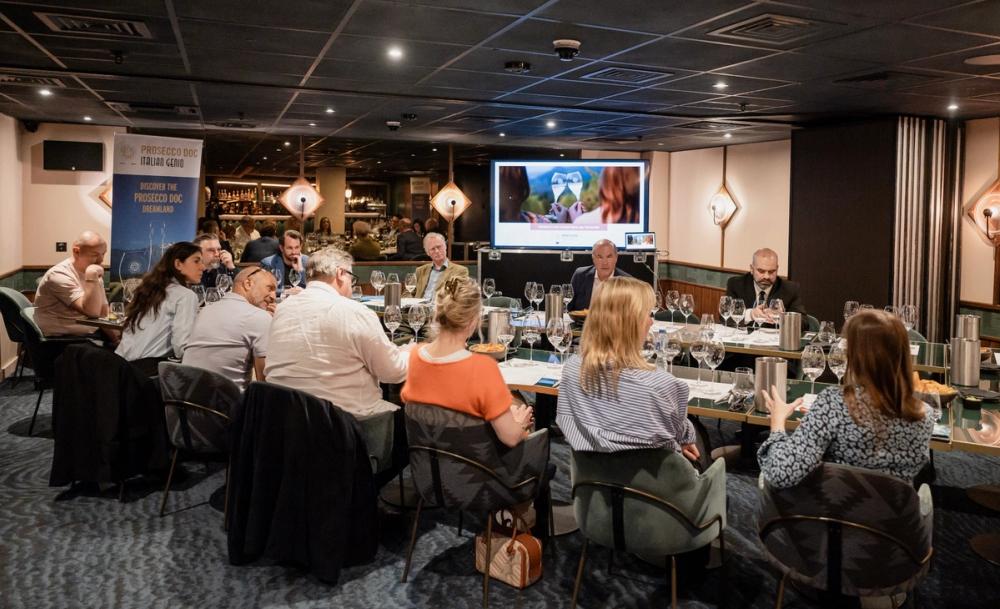
The Prosecco DOC debate brought together leading buyers from wine importers, merchants, pub groups and restaurants
The panel was split on how far buyers and operators should be looking to push consumers into different styles of Prosecco DOC.
Amathus’ Paul Fleming argues there is a big risk in trying to change something the consumer may not want to see changed. He likens it to a branding consultant who once spoke at a New Zealand Sauvignon Blanc conference that was discussing the opportunities to change and adapt traditional Kiwi Sauvignon Blanc.
“He said you have something that is universally liked that can command a good price point and you can only make it in this part of the world and you want to change it? Are you mad? This would not happen in any other category,” claims Fleming.
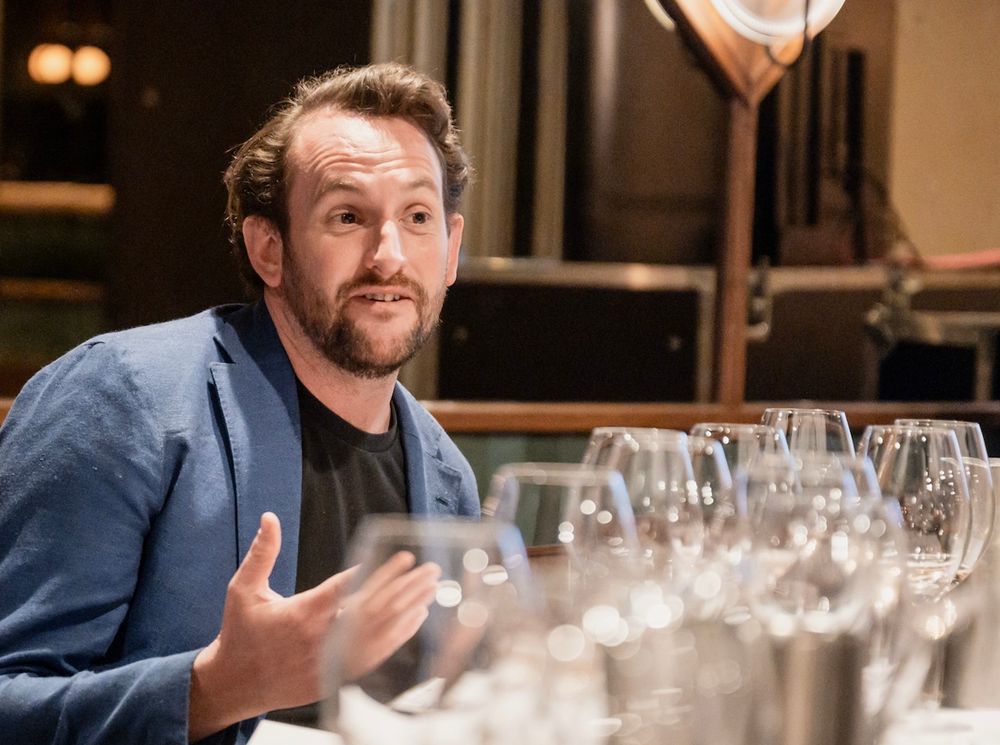
Amathus' Paul Fleming questions why Prosecco DOC producers would want to complicate the category
Victoria Sharples, though, is a firm believer in trying to expand the average consumer’s palate and understanding of what a Prosecco DOC is.
“If we keep giving them what they love, will they ever change?” she asks. Particularly when you consider what is happening in other consumer and drinks trends that are starting to “bite at the heels” of traditional wine categories, like low and no and the rise in cocktails.
“There has to be a need to be innovative, particularly as people’s tastes change,” she says. “You can't sit still."
“It depends where you are selling it,” suggests Giles James. “If it ain’t broke, don’t fix it, but if you are going to say Bocca di Lupo which is an experiential place then there’s your platform to take people on a journey. If we go to the supermarket to buy Prosecco off the shelf, then that is our go to, that is our house style, if you are going to go out to a dining experience you want to be taken outside of your norm. It’s horses for courses and about the context of where you are and what you are doing and what you want from that place.”
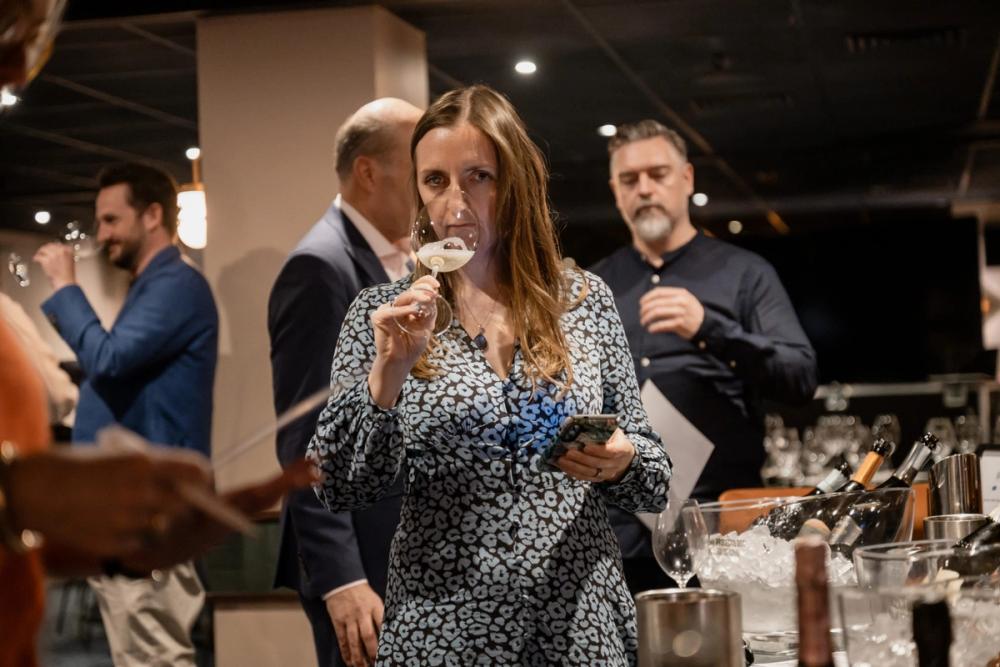
Cat Lomax says it is a "delicate balancing act" in terms of how far you try and push the consumer
Cat Lomax says “it is a delicate balancing act”. She explains: “As an immediate or wholesale move away from the style that has brought so much commercial success (i.e. Extra Dry, with a pear/ white blossom aroma profile) could alienate the core Prosecco drinker. That said, it can't be denied that some wine drinkers are seeking 'healthier' options and as such are taking an interest in the levels of residual sugar in their wines. To nurture this consumer group - which would no doubt skew younger than the average Prosecco drinker - it would be wise to work at building the presence of drier styles for the longer term.
"I thought the most successful of these on taste didn't actually stand out as being acidic or lean, as the reduced residual had been carefully balanced by a core of ripe, rounded fruit (particularly notable in Le Contesse Prosecco Brut Nature).”
Different angles
Phill Morgan, at Bucco di Lupo, says “we are all coming at it from different angles”. “Do we want to give the consumer what they want, or do we want to change what they want. Some people are in a position to do that, but you can only change a person, you can’t change a market.”

Ashley Fahey says it is able to hand sell wines more in the restaurant than it does in its shop at the Terrace on the Isle of Wight
Ashley Fahey, at The Terrace on the Isle of Wight, says it is in a fortunate position to be able to do both. “In the restaurants we give them what they want and in our shop, where we are hand selling and we have got people who are actually interested, then we try and suggest different things. It has been the same with Prosecco. We can also look to take them somewhere else. Like a zero dosage.”
“It’s a balance,” agrees Morgan. “You’ve got to sell what you’ve got. But you have also got to do your job.”
Prosecco DOC should also remember there are lots of other wine regions in the world who would love to be in their position, adds Fleming. He remembers a time when working for a restaurant group he tried to introduce an English Charmat sparkling wine and after a lengthy trial the majority of customers said “whilst that’s really lovely, can I have a Prosecco”. “People know what they want.”
Whilst he welcomes the opportunity to try different styles and see the diversity there is, he also questions just how far the consumer wants to be “pushed” out of the style they clearly love “and if you try and push them too far out of that style” there is a danger the “consumer stops recognising what they love and buy” and what ultimately pays a lot of the “salaries around this table”.
Different options

M&B's Andrew Clark is not sure it could sell two different taste profiles of Prosecco DOC
Is there an option for retailers and bars to list different taste profiles of Prosecco DOC to push the category forward?
Andrew Clark was not convinced it would work for Mitchells & Butlers. “I think it would be quite difficult for us to do that. Consumers are so used to what they are used to that the other one just wouldn’t sell.”
Aperol impact
Which is why the boom in Aperol Spritz and Select Spritz “has been a very welcome trend for Prosecco”, says Neil Phillips, UK ambassador for Prosecco DOC in the UK, who helped co-host and introduce the region to the buyers.
“The popularity of Aperol Spritz has shown no sign of slowing down not only in Italy, but here in the UK. For the perfect serve you need 75ml of Prosecco DOC, 50ml of Aperol, 25ml of soda and 1 slice of orange. There is a local touch too, as this was created in Padua in the Veneto region, by the Barbieri brothers, Luigi and Silvio, in 1919.

Neil Phillips says the "boom" in Aperol-style cocktails has been a real boost for the Prosecco DOC region
“Select Spritz is growing in popularity in retail and in the on-trade too. It is the original Venetian Spritz created in 1920 and is a more bitter and complex liqueur. The perfect serve for Select Spritz is three parts Prosecco, two parts Select Aperitivo, one Splash of soda and a garnish with a green olive.”
Phillips adds: “Prosecco DOC based cocktails are getting popular too like Negroni Sbagliato, which means ‘mistaken’ in Italian after the story that Prosecco instead of gin was added to Negroni.”
Brand power
James is in no doubt it is the brand factor of Prosecco that many consumers want to buy into. “There is a brand name behind Prosecco,” he adds.
Clark totally agrees: “Branded wine is really important. We have a number of outlets where if it isn’t branded it won’t sell - and that brand can be Prosecco. Because they have become so comfortable in everyone’s vernacular that they know they are OK with them.”
“There is a level of comfort there with our customers. They recognise that label and they know if I spend my money on it I am going to enjoy it,” he says. “You can’t underestimate that. Prosecco. Rioja. Chianti. They have all just come part of parlance and they are now a brand. That’s where it becomes very difficult to start to experiment with them."
In summary
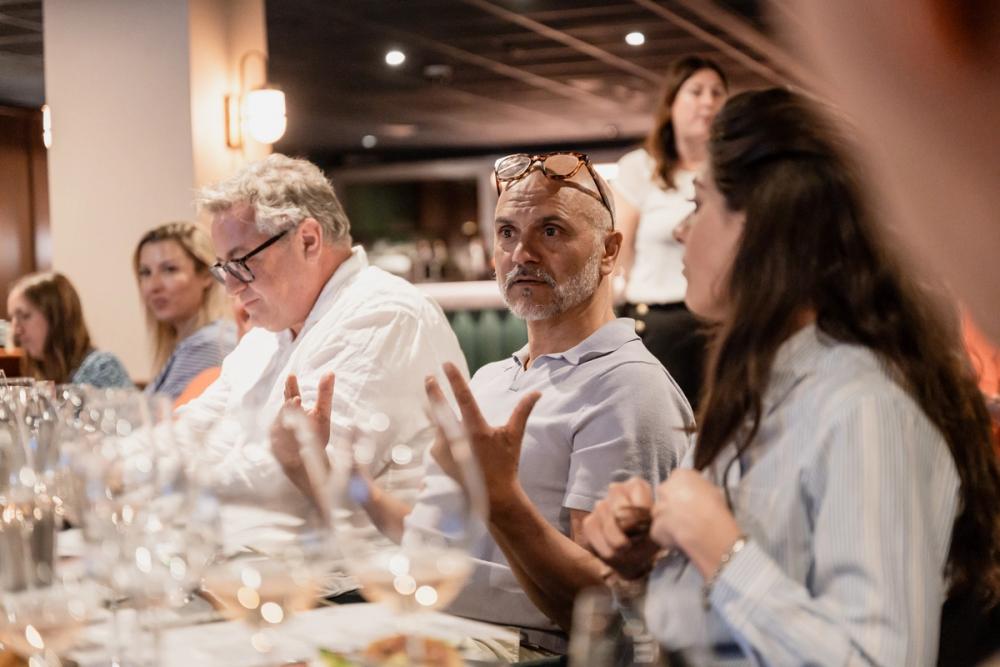
Giles James says there is an opportunity for the region to “develop as it finds its feet and matures and grows”
As someone who came to the session with an “open mind” James says his curiosity has been tweaked and there is clearly far more to Prosecco DOC than professionals in the trade might think. Particularly in terms of regionality and a better understanding of what provinces such as Belluno can deliver.
There is now an opportunity, he says, for the “conversation” about the region to “develop as it finds its feet and matures and grows”.
“What I really enjoyed about the afternoon is that it all comes down to the producer and if you are willing to delve a little bit deeper and try different styles and wines from producers you can take someone on a journey outside of their norm, or perception of what Prosecco could be. There is a raft of different wines that a producer can make and depending on where you work, and who your consumer base is, you have got that nice breadth of character and styles to find something that resonates with your own narrative as a buyer.”

Konstantinos Nestoridis says there was “food for thought” from the debate
Konstantinos Nestoridis at Midsummer House says that for a sommelier the session showed there is much more “food for thought” about Prosecco DOC that you might think, particularly in how “harmonious” it can be when pairing with food.
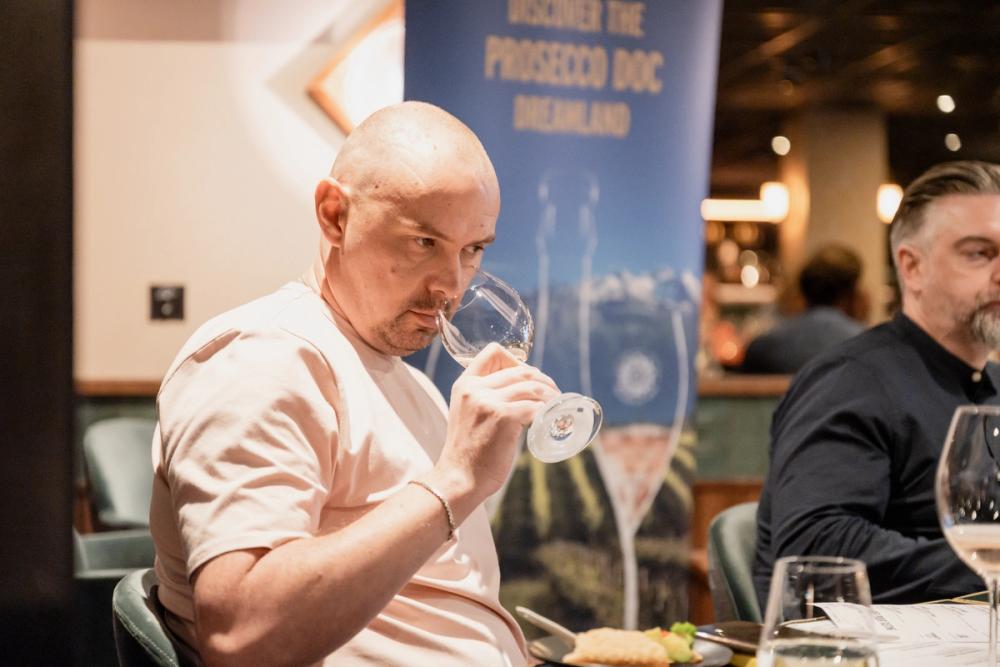
Phil Morgan says there is still lots of potential for premium Prosecco DOC
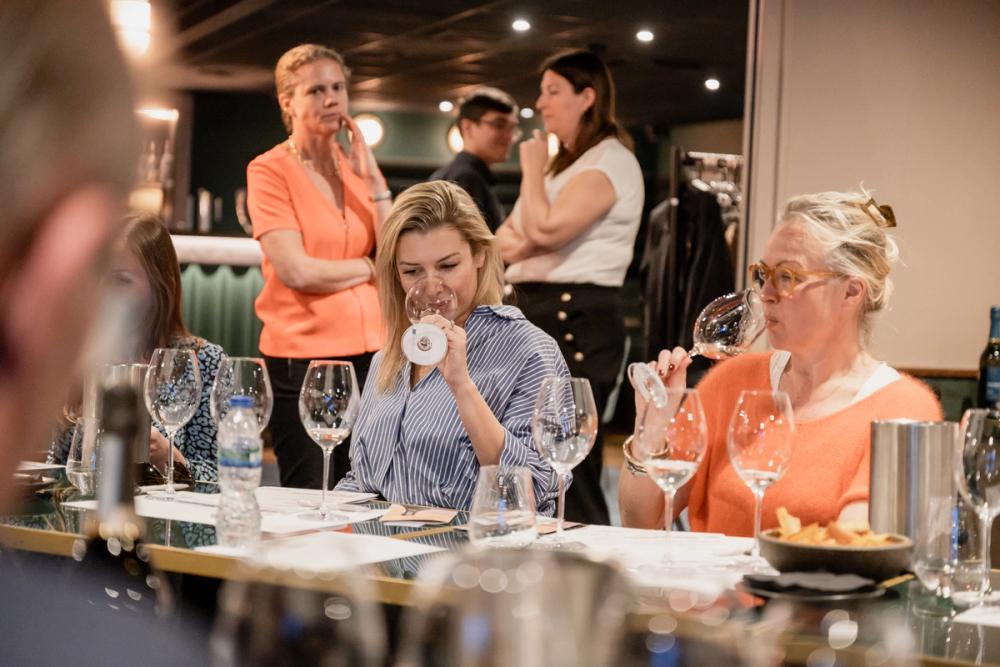
Morgan insists there are big opportunities for Prosecco DOC in premium restaurants - you just have to make sure you list “very good ones”. Ones that will “make people want to come back”.
Fleming says the debate shows how polarised the Prosecco DOC market is sector by sector. With what works in grocery retail, very different to what an Amathus or a premium restaurant might list.
“At a very commercial level it is going to be very hard to move away from a perceived value. In the same way a burger or pizza has a perceived value. But the opportunity is there where you can hand sell and have a conversation and try something new,” says Fleming.
Clark agrees and says within the on-trade that polarisation is very much around those venues where you can hand sell and where you can’t.
“A burger, a pizza and a Prosecco sell themselves and we rely on that when staff expertise can vary,” he says.
Clark was also keen to point out the need for the region to look at its bottle weight in light of the new UK EPR packaging rules and focus on sustainability. He says: “In a world where sustainability is, and ought to be, important, we should be looking to reduce the amount of heavy, embossed and (I’ll say it quietly) needlessly expensive bottles.”
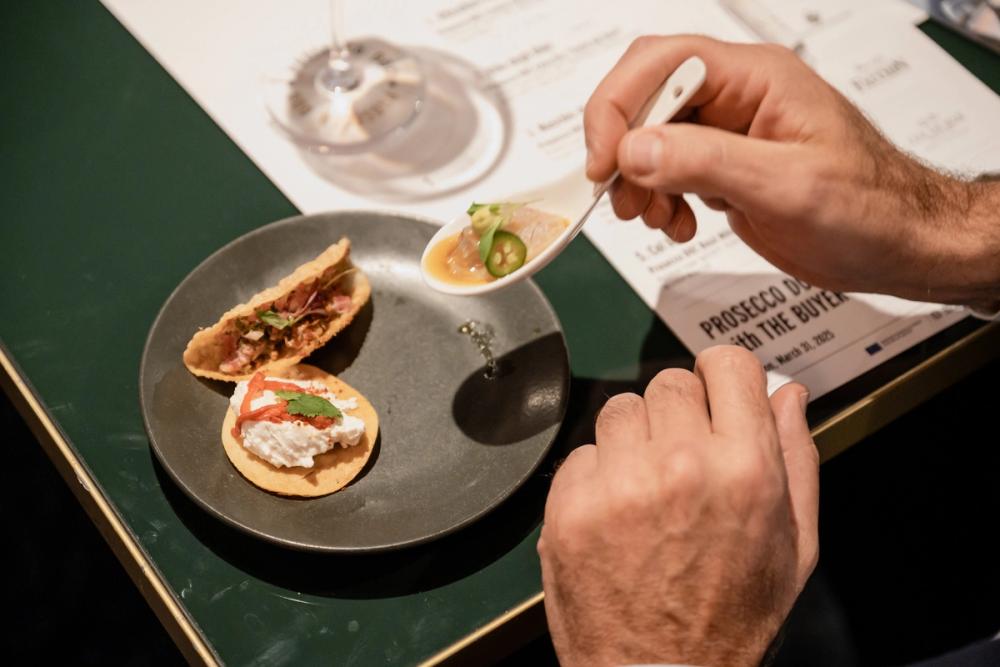
Some of the Gaucho dishes selected to pair with the different Prosecco DOCs
Far more open
Fahey says she would go away from the session far more open to the category and what it can offer her customers and the business. particularly at around £25 to £40 for the classic style and over £40 for Brut Nature.
“Firstly, I tasted more Prosecco than I ever had collectively in my life before so something was bound to change. The event helped me see that there’s much more to Prosecco DOC than I had previously given it credit for. Tasting across different styles - from the Brut Nature to the rosé - it became clear the category is evolving, and producers are actively trying to show they are not all simply producing for the masses. I now see potential in being able to hand-sell the more refined styles in the shop too.”
She adds: ”For the middle to top end of the list I think there may be a place for a Brut Nature styles. They’ve got structure, acidity, and a more refined profile that our guests are looking for when paying that bit more and also alongside food. I will go away and investigate further and look to find ones we really do like and can get behind. It has been really interesting.”
A view echoed in this final word from Cat Lomax: “The event showed that Prosecco DOC isn't sitting on the laurels of its commercial success; it's a vibrant winemaking region that's continuing to evolve and push the boundaries of what's being produced.”
Wines Tasted by the Panel
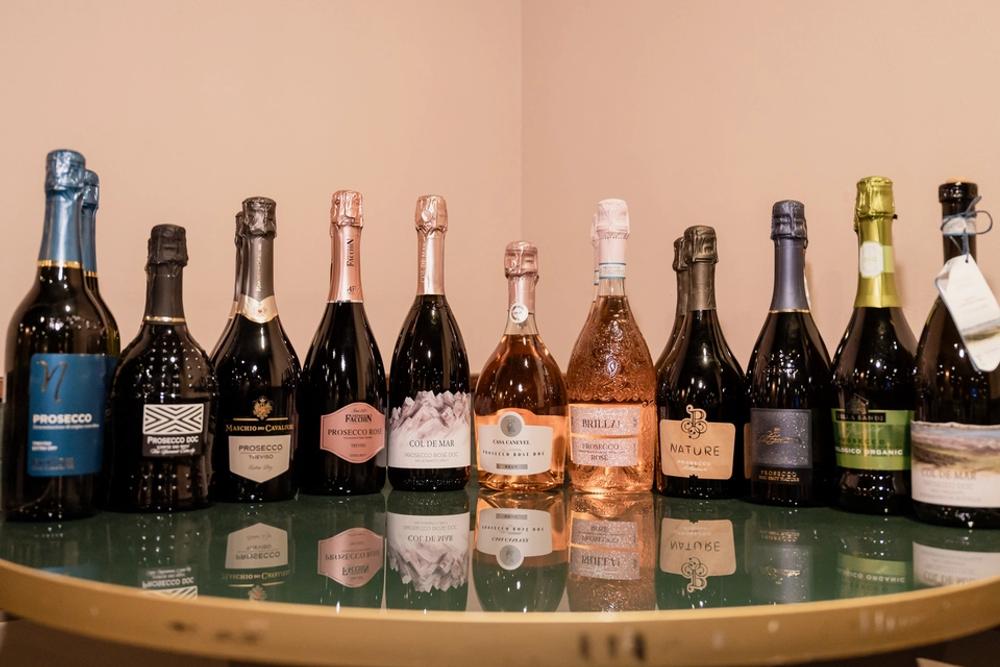
Masterclass wines
Viticoltori Ponte
Prosecco DOC Treviso Extra Dry
Residual sugar (g/l); 11% ABV; 100% Glera. Treviso, Veneto.
Importer: Presidente Wines.
Villa degli Olmi
Prosecco DOC Extra Dry "Corte dei Rovi"
Residual sugar (g/l); 11% ABV; 100% Glera. Vicenza, Veneto.
Importer: Temple Wines, Cash and Carry.
Maschio dei Cavalieri
Prosecco DOC Treviso Extra Dry
Residual sugar (g/l) 13; 11% ABV; 85% Glera, 15% Other permitted varieties. Treviso, Veneto.
Importer: Tennent Caledonian Breweries

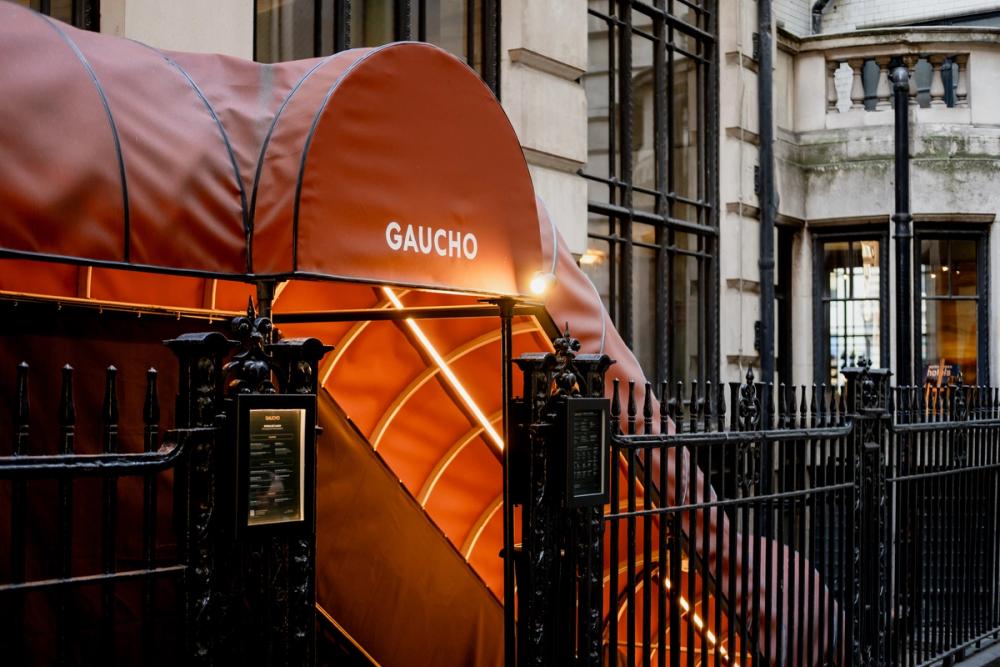
The debate was held at Gaucho in the City. Thanks to all the team there.
Pitars
Prosecco DOC Millesimato 2023 Brut Nature
Residual sugar (g/l) 0-3; 11% ABV; 100% Glera. Pordenone, Friuli-Venezia Giulia.
Importer: Vinissimo.
Le Contesse
Prosecco DOC Treviso Brut Nature
Residual sugar (g/l) 2-3%; 11% ABV; 100% Glera. Treviso, Veneto.
Importer: Continental Wines
Villa Sandi
Prosecco DOC Bio Brut "Il Fresco"
Residual sugar (g/l) 12; 11% ABV; 100% Glera organic. Treviso, Veneto.
Importer: Annessa Imports.
Wine in the Free Pour Tasting
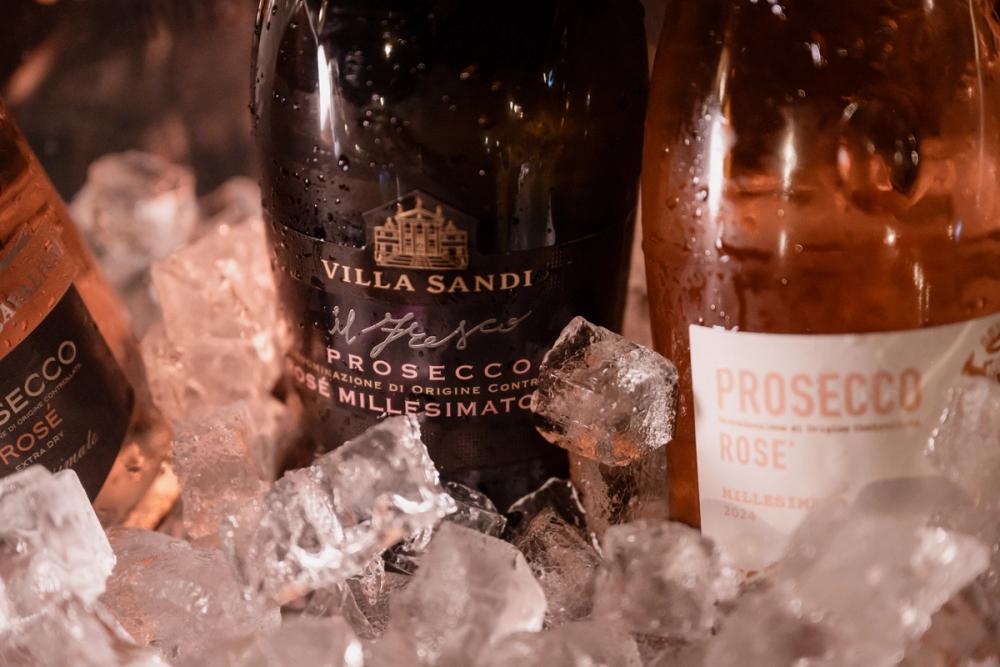
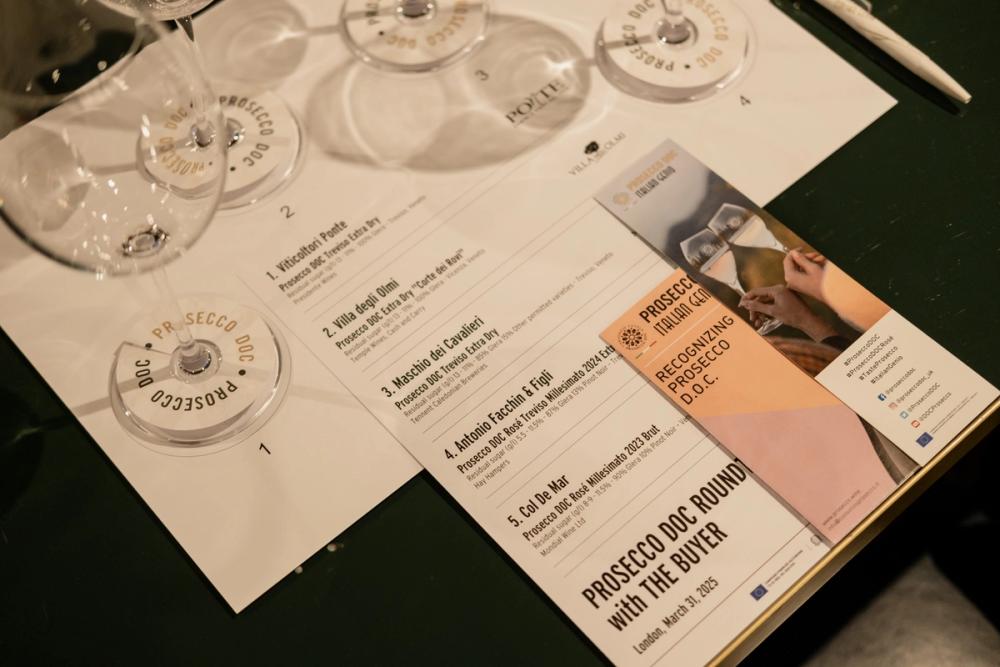
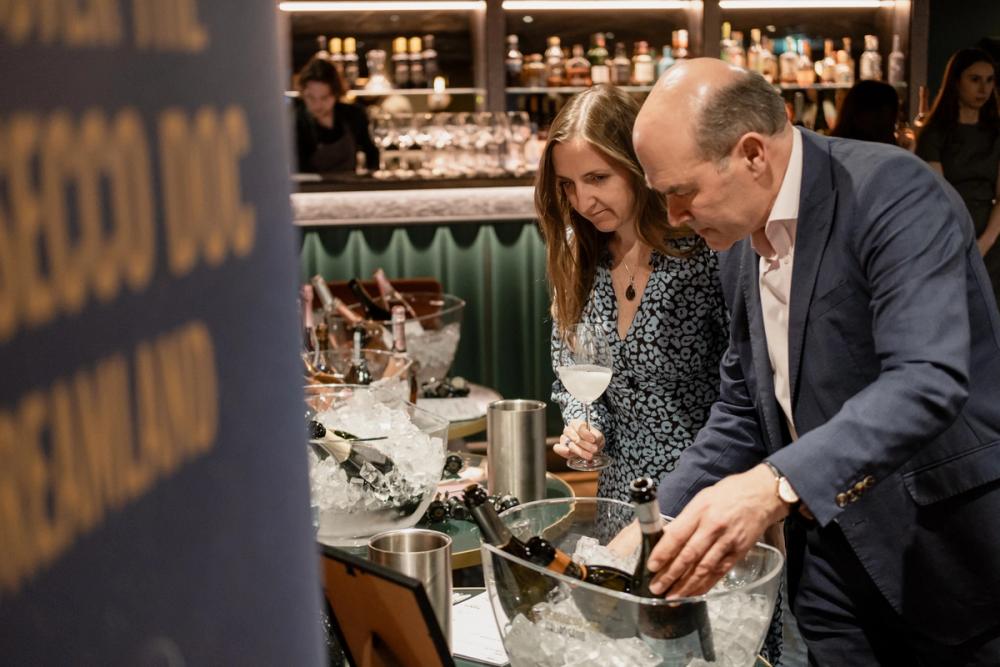
Brilla!
Prosecco DOC Extra Dry
Residual sugar (g/l) 14; 11% ABV; 100% Glera. Venice, Veneto.
Importer: William Morton Limited.
Col De Mar
Prosecco DOC Millesimato 2023 Extra Dry
Residual sugar (g/l) 12; 11.5% ABV; 100% Glera. Venice, Veneto/
Importer: Mondial Wine.
Antonio Facchin & Figli
Prosecco DOC Treviso Millesimato 2024 Brut
Residual sugar (g/l) 9; 11% ABV; 100% Glera/. Treviso, Veneto.
Importer: Hay Hampers.
Le Contesse
Prosecco DOC Treviso Extra Dry
Residual sugar (g/l) 15; 11% ABV; 100% Glera. Treviso, Veneto.
Importer: Continental Wines.
Tosti 1820
Prosecco DOC Extra Dry
Residual sugar (g/l) 16; 11% ABV; 100% Glera. Treviso, Veneto.
Importer: Bidfood.
Perlino
Prosecco DOC Bio Extra Dry
Residual sugar (g/l) 15; 11% ABV; 100% Glera organic. Treviso, Veneto.
Importer: Continental Wines.
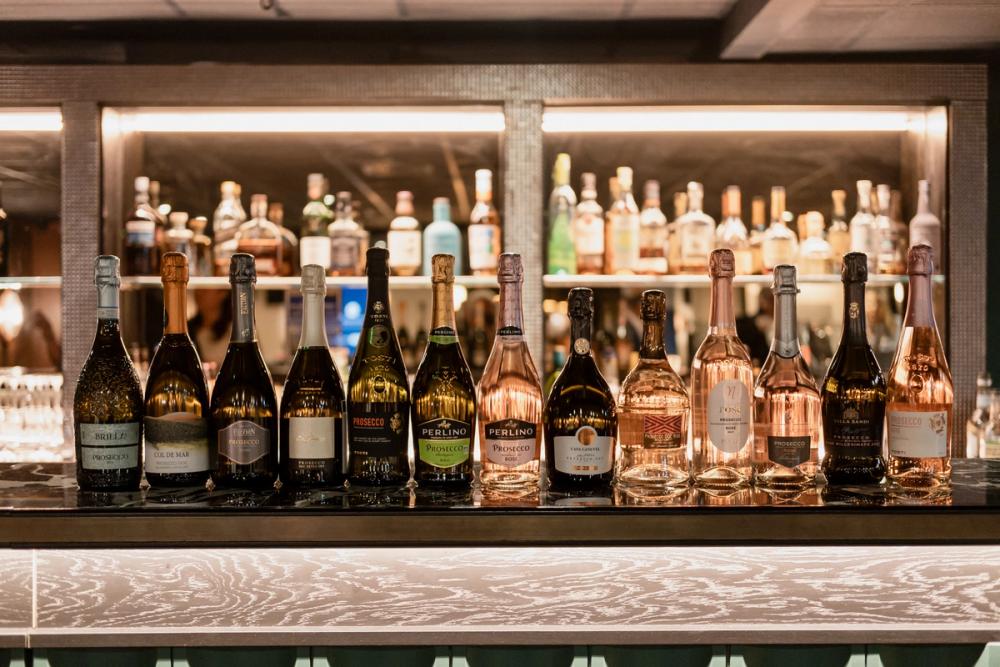
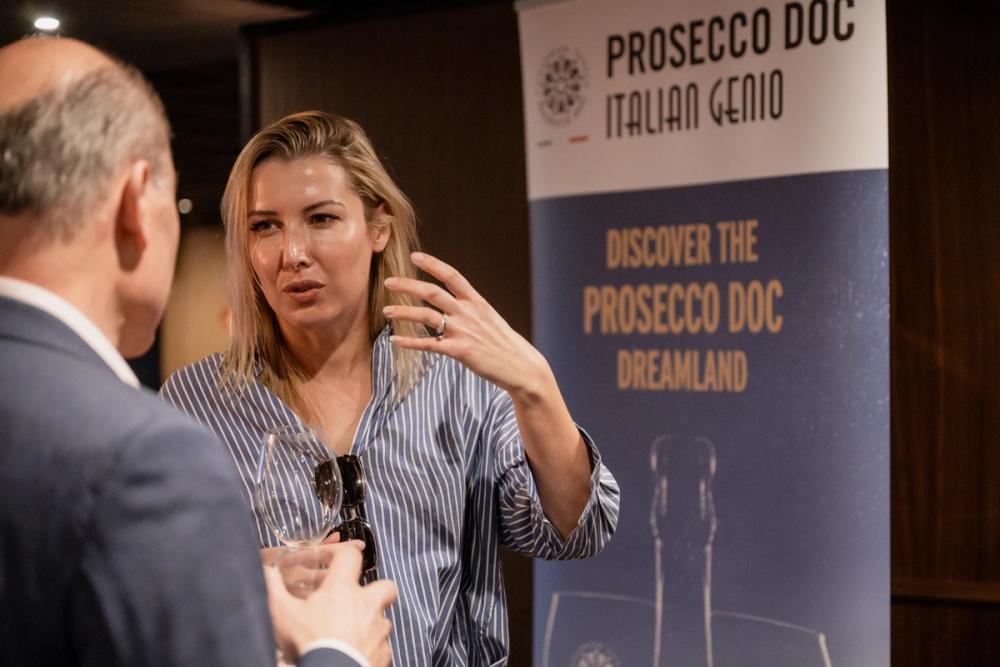
Perlino
Prosecco DOC Rosé Millesimato 2023 Extra Dry
Residual sugar (g/l) 15; 11% ABV; 90% Glera, 10% Pinot Noir. Treviso, Veneto.
Importer: Continental Wines.
Canevel
Prosecco DOC Extra Dry
Residual sugar (g/l) 14; 11% ABV; 100% Glera. Treviso, Veneto.
Importer: Berkmann Wines.
Viticoltori Ponte
Prosecco DOC Rosé Millesimato 2023 Brut
Residual sugar (g/l) 11; 13-11% ABV; 85% Glera, 15% Pinot Noir. Treviso, Veneto.
Importer: Presidente Wines.
Villa degli Olmi
Prosecco DOC Rosé Millesimato 2024 Extra Dry “Corte dei Rovi”
Residual sugar (g/l) 13; 11% ABV; 85% Glera, 15% Pinot Noir. Vicenza, Veneto. Importer: Temple Wines, Cash & Carry.

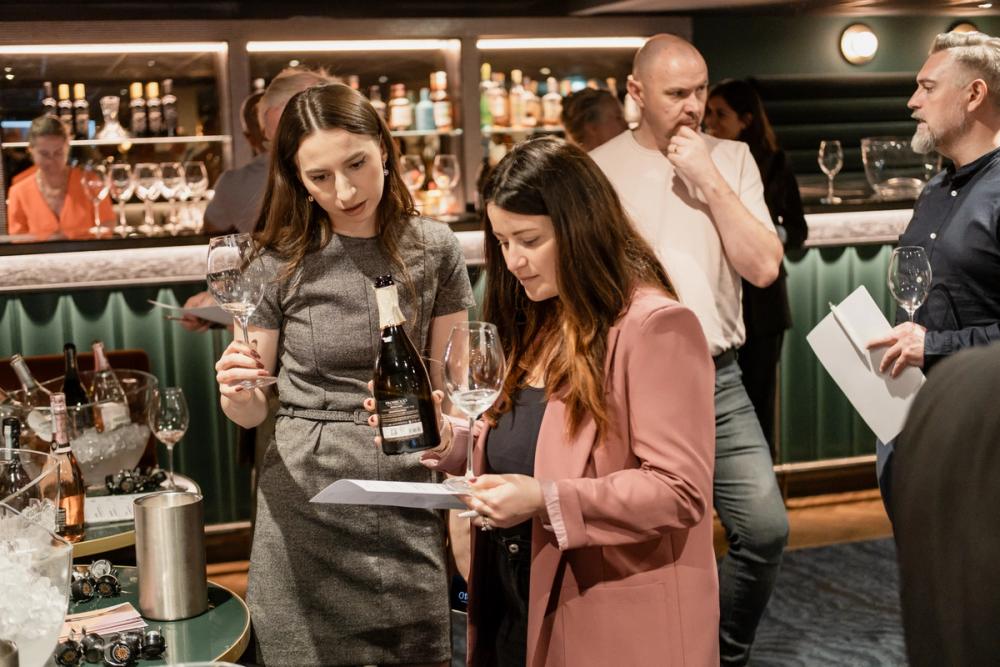
Benedetto Lengo and Cristina Ciutac from Rare Restaurants that includes Gaucho and M Restaurant
Maschio dei Cavalieri
Prosecco DOC Rosé Millesimato 2024 Extra Dry
Residual sugar (g/l) 12; 11% ABV; 85% Glera, 15% Pinot Noir. Treviso, Veneto.
Importer: Tennent Caledonian Breweries.
Villa Sandi
Prosecco DOC Rosé Millesimato 2023 Brut "Il Fresco"
Residual sugar (g/l) 12; 11% ABV; 85% Glera, 15% Pinot Noir. Treviso, Veneto. Importer: Annessa Imports.
Tosti 1820
Prosecco DOC Rosé Millesimato 2024 Extra Dry
Residual sugar (g/l) 12; 11% ABV; 85% Glera, 15% Pinot Noir. Treviso, Veneto. Importer: Bidfood.
- To find out more about Prosecco DOC go to the Consorzio de Tutela de Prosecco website here.
- You can read the first main report on the debate and the panels initial thoughts on the potential of Prosecco DOC here.
- The final article in the series will assess the potential of Prosecco DOC rosé in the UK premium on and off-trades.
- You can follow on social media:
- Instagram on @proseccodoc and @proseccodoc_uk
- Thanks to Gaucho in the City for hosting the event.

































